- Administrator
- Albums and Singles
 The second full-length from Finland's Paavoharju contains songs of astonishing variety composed out of voices, traditional instruments, field recordings, and electronics. Rather than evoking the pastoral qualities of its cover or the album's English translation, "A Song About Flowers of the Valley," the music within is more reminiscent of a dusty drawing room in an old house, forgotten by time but still home to its previous occupants.
The second full-length from Finland's Paavoharju contains songs of astonishing variety composed out of voices, traditional instruments, field recordings, and electronics. Rather than evoking the pastoral qualities of its cover or the album's English translation, "A Song About Flowers of the Valley," the music within is more reminiscent of a dusty drawing room in an old house, forgotten by time but still home to its previous occupants.
Music sounding much like a forlorn music box lost in shadows opens the album and remains a recurring theme throughout, giving the impression of someone lost in nostalgic memories. This is further enhanced by the way the group uses various audio fidelity qualities in their music, with vinyl crackling alongside modern beats suggesting the past merging with the present. Perhaps the album's intentions would be clearer if I understood a word of Finnish, yet not knowing the meaning of the lyrics or titles didn't dampen my enjoyment.
The textural variety is a definite highlight, but the album's most important quality is the songs themselves. "Kevätrumpu" is far from the quiet, introspective mood that opens the album. It contains some of the same qualities but uses them to serve a catchy dance song instead. Similarly, both "Uskallan" and "Ursulan Uni" use modern beats as their backbone. There are some tracks that don't rely so much on contemporary technology to get their point across, like the chamber music of "Tuosku Tarttuu Meihin" or the album's sole traditional folk song, "Italialaisella Laivalla." What makes Laulu Laakson Kukista so enjoyable is how the band naturally weaves these disparate elements together.
At a little over a half an hour, the album barely qualifies as full-length. Usually that may not be such a big issue in and of itself, but it's a little problematic here because the album has some padding. While the eerie atmospherics tie the music together and make for a consistent mood, the constant revisiting of this theme, especially on the album's last three out of four tracks, detracts somewhat from the album's overall power. Fewer interludes and more songs would have been nice.
Even so, the album's structured material is captivating enough to override the languid intermissions. The album may be brief, but its haunting beauty is hard to forget.
samples:
Read More
- Administrator
- Albums and Singles
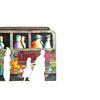 It is not too often that a band's entire discography can end up being compiled into a single, 36-minute album, but such is the case with The Loved. Originally a five song EP released 10 years ago, here it is reissued and expanded with five more tracks intended for a full album which never materialized. What remains is a disc of unpretentious pop-inspired alternative rock, which sadly points to what could have been.
It is not too often that a band's entire discography can end up being compiled into a single, 36-minute album, but such is the case with The Loved. Originally a five song EP released 10 years ago, here it is reissued and expanded with five more tracks intended for a full album which never materialized. What remains is a disc of unpretentious pop-inspired alternative rock, which sadly points to what could have been.
Without knowing that background, this feels like a cohesive record: the tracks that were intended for the full length fit in nicely with the material from that debut EP. The only noticeable difference is a slightly rawer edge, perhaps it was a change in overall sound, or perhaps it was something that was not ironed out from the demo stages, but it’s so subtle that it is a non-issue. At the time, and even today, there was just very little ego to the work. Not as an intentional move to seem dark or mysterious, but to let the music be the focus, not the attitude or the image.
The songs are rather simple, uncluttered affairs. The title track and “Nadine” are rather slow, calm tracks with plaintive guitar and slow, sparse drums. There’s a great deal of spaciousness here: unlike bands that feel the need to multitrack or layer as much as possible, here they’re happy to simply let there be some space in the mix. “House Painter” and “Lydia/Spinning” are a bit edgier, more distortion on the former, and the latter hinges on a heavier bass melody. Yes, the second half is a cover of Loop’s “Spinning”, which even with the heavily flanged sound stays much more stripped down than the original, which allows the basics of the song to shine through.
The bonus tracks have, as I said, a slightly rougher sheen to them that, while not dramatic, is noticeable. “It’s Sooo Sad” and “Winter Comes and Goes” have a rawer sound, with a bit more aggression and distortion when compared to the prior tracks, but still stays close to the pop sensibilities that the entire album has. The closing “Her Tiny Little Heart” channels early U2 (during their mulleted days) in a good way with the effected drums and guitar playing.
It is kind of sad to hear this because there was a lot of potential for The Loved. The ten tracks that made it to tape show a trio that already had a good handle on their sound and what they wanted to do, but it just never “happened.” Thankfully the good people at Temporary Residence happened to have heard and loved the original EP enough to give it a wider release that it deserves.
samples:
Read More
- Administrator
- Albums and Singles
 This collection of vinyl/outtakes from the Rhode Island garbage band might span almost ten years, but for the most part, their pedigree is irrelevant. They all sound as if they have come out of the same dirty, condemned back alley club with a rat problem and ugly people bareback fucking in the bathroom. Looking at the liner notes, that's not necessarily a metaphor but an accurate depiction. Strip away the old grease and dried jizz, however, and there's a solid set of songs amongst the filth.
This collection of vinyl/outtakes from the Rhode Island garbage band might span almost ten years, but for the most part, their pedigree is irrelevant. They all sound as if they have come out of the same dirty, condemned back alley club with a rat problem and ugly people bareback fucking in the bathroom. Looking at the liner notes, that's not necessarily a metaphor but an accurate depiction. Strip away the old grease and dried jizz, however, and there's a solid set of songs amongst the filth.
It’s not surprising this level of skuzzy noise rock would come out on Load, especially considering the band hails from the same Providence streets as the label (seriously, what kind of industrial pollution leads to music like this?). Although probably more notorious for their live shows than the actual music, this odds and ends collection of tracks stands up even without the visual spectacle. The 12 tracks and two bonus on the included 3" CD are culled from the vinyl releases Times I Despise, Dairy 4 Dinner, and Why I Live, plus two compilation appearances and three unreleased tracks.
The band likes to lock into a slower, sludgy pace on a lot of the tracks, “Times I Despise” and “Super Stupid Market” both are happy to channel early No Wave muck via the distortion and noise, the latter showing their twisted sense of humor with screamed lines like “there’s too much shit in my basket!” Not highbrow, nor should it be. Sometimes full on grating noise is the recipe of the day: “Dairy 4 Dinner” and the microcassette recorded “How Little Will It Take” blur that line between scum rock and abrasive noise. Then, there’s always the short little bits like “The Biggest Shit,” which is a very accurate description for its fast, loud, sloppy and messy duration.
The two longer 10” tracks that close the disc are where some distinct variations lie. “Why I Live” has a sharper overall sound with more prominent percussion and a different sound to the guitars, while “Hit The Land” features an organ, harmonica and a saxophone, and instead of going the sleaze punk route instead alternates between free jazz and classic spy movie soundtracks, if they were played by sloppy garage band.
The first part of the 3” included is one of the new tracks, “Pass the Buck”, which is 12 minutes of overdriven sludge that goes on and on with subtle variation. The other, shorter track is a live appearance “FM 91.1” that is pure screaming, fuzz and drum pounding—no subtlety at all here.
One of the nicest things is that, even amongst all this noise, distortion and feedback, the songs have a catchy underpinning that make them quite memorable. Beneath the grime, there are definite hooks; rhythms and melodies that aren’t hard to pick up on, and make what could be a pointless racket an enjoyable listen.
samples:
Read More
- Administrator
- Albums and Singles
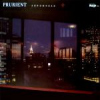 If ever I wanted music to encapsulate raw pain and anguish in such agonising detail and with such empathy, then this has to be it. Arrowhead is familiar Prurient/Dominick Fernow territory of emotions stripped bare and the ugly underside of the human condition, all delineated through his use of tortured circuits and fried electronics.
If ever I wanted music to encapsulate raw pain and anguish in such agonising detail and with such empathy, then this has to be it. Arrowhead is familiar Prurient/Dominick Fernow territory of emotions stripped bare and the ugly underside of the human condition, all delineated through his use of tortured circuits and fried electronics.
This particularly applies to the first track, “Sternum,” a stripped down nerve-shredding 12–minute dive into the night-black depths. Simply composed of squealing and humming electronics (but set at a low volume), sparse percussion and vocals that bleed anguish, it nevertheless touches nerves with its unaffected directness. The simple lyrical refrain of ‘I want to die with you’ does an effective job of exposing the horror of a personal hell of frustration and despair. Inwardly spiralling psychoses and mental phantasms assail from all sides, and whatever sliver of sanity or normality was there is finally eroded away. The deterioration and degradation is palpable. This is emotional despair and a mind at the end of its tether at its absolute rawest. Combined with that insistent insectoid squeal it drills itself right into the brain and sets the teeth on edge.
If “Sternum” is pain and anguish, then “Ribcage,” the second track, is about the aftermath, the eventual mental dissolution and destruction: a cacophonic maelstrom of screeching electronics and feedback, interspersed with screams; the swirling chaotic randomness portrays a mind breaking down into incoherent atomisation. This is what it must feel like to descend into the depths of the long night of the soul, or to stand on the threshold between safety on the one side and a bottomless chasm on the other. There comes a point where the track quietens down a degree or two, a place perhaps where that threshold exists, and one almost gets the feeling that all is not quite lost here. Any such illusion is soon shattered, as the track once more breaks out into a storm of noisiness. The only way is down into the illimitable and lightless subterranean depths.
The last track, “Lungs,” is a bit of a departure from the other two pieces, principally because it introduces the notion of rhythm. Rhythm is all the more surprising because of its complete absence anywhere else on here. However, extending what I have said above, I guess it makes a species of sense in its own way. I can imagine, after having plumbed the utmost deeps and having reached a kind of equilibrium, that the mind gets wrapped up in a mental inferno of its own making. Carpeting the primitive tribal rhythm is a thick layer of granular sheeting which is entirely descriptive of the furnace roar. Indeed, a self-created (and self-perpetuated) hellish purgatory.
Noise and power electronics only hold my attention if the artist has an approach that takes him/her off the well-trodden path. Fernow, while using the tools and palette of the genre, manages somehow to at least bend the material to do his bidding, and to attempt to say something new. For the most part I feel he amply succeeds, and listening to this was a welcome change to the Spinal Tap-style ‘turn everything to 11 and record what comes out the other end’ typical of the genre. In the course of writing about Arrowhead I must have heard it about a half-dozen times, and in every instance there was some new subtlety that revealed itself. Prurient is definitely one of the more creative of noise musicians, unwilling to blindly tread the same path as others do. On this example at least Fernow shows what can actually be done with noise, with a little thought and some creativity and talent.
Samples
Read More
- Administrator
- Albums and Singles
Immune Recordings is thrilled to announce that Micah Blue Smaldone has signed to the label. Hailing from Portland, Maine, he has just finished recording his third full-length album entitled The Red River to be released in November.
Micah is currently on the road for a month long tour with SubPop recording artist Death Vessel. In addition to performing his own set each night Micah will also be playing in the Death Vessel band.
Micah Blue Smaldone & Death Vessel 2008 Fall Tour
08.30 - Chicago, IL @ Schubas Tavern
08.31 - Grinnell, IA @ Gardner Lounge
09.03 - Vancouver, BC @ Media Club
09.04 - Seattle, WA @ The Tractor Tavern
09.05 - Portland, OR @ Doug Fir Lounge
09.06 - San Francisco, CA @ Bottom of the Hill
09.07 - Los Angeles, CA @ Spaceland
09.09 - Phoenix, AZ @ Modified Arts
09.11 - Denton, TX @ Rubber Gloves
09.12 - Austin, TX @ Emos Lounge
09.13 - Baton Rouge, LA @ Spanish Moon
09.14 - Atlanta, GA @ The Earl
09.16 - Chapel Hill, NC @ Local 506
09.17 - Washington, DC @ Black Cat Backstage
09.18 - Philadelphia, PA @ Johnny Brendas
09.19 - New York, NY @ Mercury Lounge
09.20 - Brooklyn, NY @ Union Hall
09.21 - New Haven, CT @ BAR Nightclub
09.22 - Vineyard Haven, MA @ Che's Lounge
09.23 - Providence, RI @ The Living Room
09.24 - Portland, ME @ SPACE (*** New Album Release show! ***)
09.25 - Boston, MA @ Harpers Ferry
09.26 - Turners Falls, MA @ The Rendezvous
"Micah Blue Smaldone sounds like a dead man... he taps into a vein of something real and present; a preternatural sensibility deep inside many post-millennial lost souls. This music is haunting, the notes and lyrics tugging the listener's soul as if you'd fallen into a sonic bramble patch." - Left Hip Magazine
Immune Recordings
PO Box 08410
Chicago, IL 60608
www.immunerecordings.net
Read More
- Administrator
- Albums and Singles
 Utilizing recordings made over the last decade to make their debut album, the Welsh trio cannot be called hasty. They can, however, be called a treat to the ears. Oscillating wildly between spacey pop and documentary, they have assembled an album that is not only a collection of wonderful songs but also give a bystander’s perspective on the strange creature that is Europe.
Utilizing recordings made over the last decade to make their debut album, the Welsh trio cannot be called hasty. They can, however, be called a treat to the ears. Oscillating wildly between spacey pop and documentary, they have assembled an album that is not only a collection of wonderful songs but also give a bystander’s perspective on the strange creature that is Europe.
I first heard Parking Non-Stop about four years ago when they supported Einstürzende Neubauten in Dublin. Unfortunately on the evening I was running around like a headless chicken and could not get a chance to give them the attention they deserved. Listening now to Species Corridor and piecing together the glimpses of their performance in my mind, I feel a true magic in this band. Their combination of found sounds and field recordings with art pop music works surprisingly well, it sounds like the open ear of Scanner and the melodic ingenuity of Wire (but isn’t Githead!).
The music of Parking Non-Stop is about the ever changing shape and character of Europe. Their name comes from a signpost in Eastern Europe (if my memory serves me correctly), the label they are on is run by Jochen Irmler of Faust and their field recordings cover much of the topography of Europe. All these elements and facts brought altogether, Parking Non-Stop serve as documenters of what Europe was, what it now is and what it may be. Unlike many of the conservative politicians in Europe, there is an openness here to new Europe, its latest member states and the possibilities they bring. Like Kraftwerk depicted it on Trans-Europe Express (alluded to here on the superb “Trans-Siberska Express”), Europe is more than an economic super state; it is a chance for culture to breed and expand beyond physical borders.
Alan Holmes' service in Ectogram serves him well here, his guitar work is versatile and gentle (apart from the awesome and blistering solo on “City in the Intermediate Realm”). The melodies play well against the washes of sound created by Dewi Evans (on various keyboard and synth style instruments). Both provide a vivid space for Zoë Skoulding’s ethereal vocals to exist. Her voice sounds so human amidst these electronic devices and forms a bridge between the field recordings and the music. On the title track this synthesis of exotic recordings, music and voice is particularly powerful (and as the first piece on the album it is an exciting introduction to what is to come).
We all have friends who despair when we move towards the stereo with a new CD, invariably they find our latest purchases painful to listen to. Species Corridor is an album as much for those friends as it is for the average Brainwashed reader. It is a strange and beautiful album that sits comfortably both on the conceptual side of modern music and on the delightfully listenable side of things. It has been a long time coming but it has certainly been worth the wait.
samples:
Read More
- Administrator
- Albums and Singles
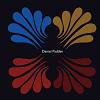 Both in- and outside Volcano the Bear, Daniel Padden has made some stunning music and his One Ensemble are the golden children in my eyes. Their jubilant and rapturous music is some of the most thrilling music currently available on a compact disc. Yet with this solo album, Padden takes the same spirit of his ensemble but strips it down to the bare essential (himself). With an occasional guest player, Padden has crafted an idiosyncratic, unassuming and fascinating album complete with hummable melodies and confounding noises.
Both in- and outside Volcano the Bear, Daniel Padden has made some stunning music and his One Ensemble are the golden children in my eyes. Their jubilant and rapturous music is some of the most thrilling music currently available on a compact disc. Yet with this solo album, Padden takes the same spirit of his ensemble but strips it down to the bare essential (himself). With an occasional guest player, Padden has crafted an idiosyncratic, unassuming and fascinating album complete with hummable melodies and confounding noises.
That demented folk sound that Padden usually employs is of course here in full. Mutated Eastern European scales and primal folk arrangements appear in various guises throughout the album. “Marseille Tape” (among quite a few other songs) utilises the cello playing of Peter Nicholson but Padden has edited the cello recordings down to create John Cale-esque string drones, propelling the other elements of the song like Cale’s viola propelled the Velvets on. Elsewhere Padden chops up the tracks almost arbitrarily in places, creating dreamy juxtapositions between shapeless recordings and songs.
Pause for the Jet has quite a different mood to the recent output by Padden’s One Ensemble, comparable in that they sound like they come from the same place but the music here has an intimate quality to them, the songs sound like wax cylinder recordings made by a crazy old recluse for his own amusement. For example, “Crow Crow Growth” sounds utterly strange and sincere. Overall the album is less flashy and probably will come an undeserved second to the One Ensemble releases as they are more obvious in their excitement. Many of the pieces feel like short sketches rather than finished compositions but that being said, this is certainly not just a collection of demos thrown together for a quick penny; there is a looseness to the recordings that sounds so playful, so warm.
Those familiar with Padden and Volcano the Bear have probably abandoned this review from the start so they can go and order it post-haste. That Padden has a Midas touch when it comes to music is no secret and anyone who is still with us (i.e. casual Volcano the Bear fans or welcome newcomers) who is on the fence about that group’s offshoots could do far worse than pick this up. For Volcano fans who have returned at this point, your money is well spent. This is one of those albums that although does not jump out screaming “Play me!” will provide much enjoyment and calm on the occasions it is noticed.
samples:
Read More
- Administrator
- Albums and Singles
 Nurse With Wound's contributing pianist (Sylvie and Babs, Spiral Insana, A Sucked Orange, and a number of compilation and odd tracks) gave up recording as Sema by the late 1980s and continued on through the '90s under different guises and aliases to suit quite a different style of music he pursued. This is the first release in nearly 20 years under his own name and finds a return to the quiet and introspective simplicity that fans of the quiet piano era will easily adore.
Nurse With Wound's contributing pianist (Sylvie and Babs, Spiral Insana, A Sucked Orange, and a number of compilation and odd tracks) gave up recording as Sema by the late 1980s and continued on through the '90s under different guises and aliases to suit quite a different style of music he pursued. This is the first release in nearly 20 years under his own name and finds a return to the quiet and introspective simplicity that fans of the quiet piano era will easily adore.
Crouton
Written on Water consists of eight compositions which unsurprisingly center around piano. The package, in Crouton style, is stylish and atypical, completed with a care and aesthetic to design and presentation: the sleeve is letterpressed and delicately folded with a printed image framed and inserted on the cover. (It's also a hand-numbered edition of only 500.) The variety of each piece suggest to me that these recordings have been collected over a number of years with different ideas and goals in mind. There is something for a lot of different fans of styles however I'm hesitant to say this is a collection which will find the majority of people loving all of.
It opens deceptively with a very Philip Glass school of minimalism composition, the abrasive and rhythmic "Over Land." What follows are tunes which are far more peaceful, introspective, and almost personal sounding. A captivating tune like "Interior Device" wouldn't sound out of place on the United Dairies LP Valentine Out of Season, an album which, after years, I'm still anxious to hear restored from the original master tapes and issued on CD for the first time. The gorgeous "Persistence of Memory" and "New Harmony" sound to me like the most logical evolutionary step from this style, as the arrangement is sparse and each embraces a number of pauses while introducing very few treated sounds to accompany the piano at the forefront. The scale, tonality, and effects on "Persistence of Memory" are reminiscent of some of Harold Budd's works but it clearly is not a copycat piece, as repeated motifs suggest more that it is in touch with a mid 20th century piano style of Erik Satie. In between "Interior Device" and "Persistence of Memory" are two significantly more multitracked but completely different recordings. The title tune is a serene, moody, and cinematic piece while "Ein Form" is a song with abstract loops and counterpoint: here the piano dances with synthetic wind and percussive melodic instrument sounds. Its theme returns with slight alterations as "Eight Form" later on the disc.
Closing the album is the beautiful "Orbits" and an intoxicating unlisted ninth track (only on the physical release), the first of which echoes back to the pastoral sound of songs like "Interior Device," while the last bit almost comes full circle to "Over Land" with its repetitiveness, however it is not nearly as abrasive as the album opener.
I hope this is album is only the beginning of a reintroduction of Robert Haigh, stripped clean of the mechanicalism of his '90s output. While bloggers and bit torrenters enthusiastically share the solo and Sema recordings, I have found the quality to be absolutely dreadful, so with any luck the originals can be located and re-emerge soon as well.
samples:
Read More
- Administrator
- Albums and Singles
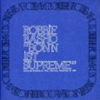 Almost 23 years after his death, Robbie Basho's cosmic approach to steel-string guitar is the stuff of legend. On this 1980 live recording, Basho's exciting and perplexing playing is sometimes punctuated by his delightfully unfashionable and extraordinarily full-throttle singing.
Almost 23 years after his death, Robbie Basho's cosmic approach to steel-string guitar is the stuff of legend. On this 1980 live recording, Basho's exciting and perplexing playing is sometimes punctuated by his delightfully unfashionable and extraordinarily full-throttle singing. While often mentioned in the same breath as John Fahey and Leo Kottke, it’s possible to draw a line connecting Robbie Basho back to Blind Willie McTell and Ravi Shankar, and forward to Sir Richard Bishop, Steffen-Basho-Junghans, Matt Valentine, Jack Rose, and James Blackshaw. In that sense Basho is an important link back to the country blues past and to myriad tunings and styles from across the globe.
Robbie Robinson went to a military school, then did pre-med, lacrosse, weightlifting, sang in choirs, and played trumpet. In his embrace of individualism and creative freedom, he bought an old Mexican 12 string, wrote poetry, painted, and took the name Basho in honor of haiku poet Matsuo Basho. Blues, folk, and classical European modes were studied but his raga style emerged after hearing Shankar’s early 1960s sitar records. Basho used open C and more exotic tunings and he developed an esoteric doctrine for 12- and 6-string guitar, concerned with color and mood. He spoke of “Zen-Buddhist-Cowboy songs” a long time before Gram Parsons mentioned his vision of Cosmic American music.
Basho made several albums for Fahey’s Takoma label, and was similarly interested in using the guitar as a formal concert instrument. His humor and graciousness are often lost amid accusations of an overly-reverential approach and the fire in his playing unfairly ignored due to his later association with the Wyndham Hill label. Before his death Basho continued to expand his compositional and harmonic ideas into classical scores. He wrote “a Sufi symphony” and another for piano and orchestra about the Spanish and Christian cultures coming to America.
As the liner notes reveal, Bonn ist Supreme has been polished up from a second-generation cassette tape and the original source master tapes are missing, possibly destroyed. Even so there is enough clarity and a wild resounding joyfulness to be heard here on such tracks as “Rocky Mountain Raga,” “Easter,” and “The Grail and the Lotus.” I find “German Chocolate Cake” as strange and unsatisfying as the dessert itself (note that this track has been recorded elsewhere as “Ackerman Special”). Amongst the other offerings are “Fandango” and “Silky Jane,” two pieces that Basho may have never recorded in the studio. Also, “Cathedrals et Fleur de Lis” is a fine rendition of the track which originally appeared in 1969 on Basho’s Venus in Cancer album.
samples:
Read More
- Administrator
- Albums and Singles
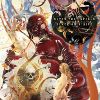 The latest from Zagreb's instrumental rockers Seven That Spells is a marked improvement over their previous collaboration with Acid Mother Kawabata Makoto. While that album certainly wasn't bad, its main fault was that it sounded too much like any other Makoto project. Here, however, their energy and prowess are on full display.
The latest from Zagreb's instrumental rockers Seven That Spells is a marked improvement over their previous collaboration with Acid Mother Kawabata Makoto. While that album certainly wasn't bad, its main fault was that it sounded too much like any other Makoto project. Here, however, their energy and prowess are on full display.
What sets the band apart from other instrumental psych groups, besides their occasional synth, is their use of the saxophone, particularly on songs like "Ra" and "Lo III." Its playing is alternately soaring or frenetic, complementing the music perfectly and giving it a unique identity. Although all of the musicians are uniformly excellent, drummer Bruno Motik in particular stands out on tracks such as "Lo III" and "Daktari." His unconventional style brings a welcome urgency to these songs.
Unlike the work of some other instrumental groups, there is never a sense that these songs are lacking vocals. Their ever-evolving arrangements provide all the entertainment they need. The band goes from whirring electronics to tribal beats to straight-ahead rock to ear-shattering freakouts with ease. They are always full of surprises, even ending the album's finale, "Tearjerker," with an airy, palette-cleansing guitar cloud.
The flipside of the CD is a DVD of one of the band's live performances. While generally the bonus material that supplements an album tends to be of average or sub-par quality, this concert footage is actually pretty good. It doesn't waste time with any artsy gimmicks and shows the band under decent lighting, capturing their music with good sound quality. The songs themselves don't stray too far from how they sound on the album proper, but that's only a minor complaint. Since I'm not sure if I'll ever have the chance to see them live, it's nice to have this footage.
There seems to be a dearth of quality rock these days, but Black Om Rising goes a long way toward proving that wrong. Lacking any fashionable pretensions, the group simply lets their music speak for itself in all of its dazzling glory.
samples:
Read More
- Administrator
- Albums and Singles
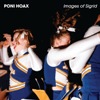 On the surface, the second album from Poni Hoax seems to have it all: brooding synthesizers, punchy drums, a dispassionate yet forceful singer, and an icy attitude. While it contains several good songs and some decent hooks, it's not enough to override the album's overbearing mood or its sections of needless repetition.
On the surface, the second album from Poni Hoax seems to have it all: brooding synthesizers, punchy drums, a dispassionate yet forceful singer, and an icy attitude. While it contains several good songs and some decent hooks, it's not enough to override the album's overbearing mood or its sections of needless repetition.
One of the album's biggest flaws is that too many of these songs are far longer than necessary. The band seems unable to pare down these songs to their essential elements, and the result is a bunch of otherwise enjoyable tracks that end up overstaying their welcome. The opener "The Paper Bride" is a perfect example of this. The intro builds tension for almost two minutes, which is almost a minute and a half longer than necessary. After the vocals have finished, it then continues with little variation for two more minutes, making what could have been a sharp three or four minute pop song into a nearly seven-minute epic. This is a formula that similarly buries and ruins pop gems like "Antibodies" and "Crash-Pad Driver." Also dooming the album is the nearly fourteen-minute-long ambient closer "Faces in the Water" that seems like mere tacked-on filler. It's completely out of place and adds nothing to the album overall.
The album's stand-out track is "The Bird Is on Fire," the only song that was able to maintain my interest from beginning to end. It has a discernible structure that goes through natural changes as it progresses, heightening its enjoyment at every turn. There are also a couple of near misses, like "Pretty Tall Girls" and "All Things Burn," but they're not enough to save this album.
Attitude reigns supreme here at the expense of content. Besides being too long, there are simply too many other bands doing music like this much more successfully to make Images of Sigrid linger for long in the memory.
samples:
Read More

